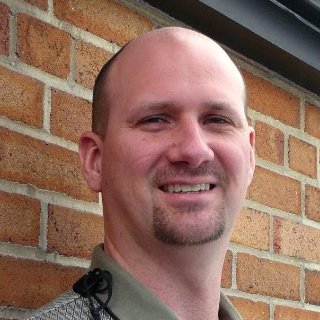US Navy SEALS undergo and are forged by some of the most intensive Special Forces sections and training of any elite military professional in the world. They are a special breed of warrior with mission capabilities in any environment. Often operating silently under cover of darkness, they train with a relentless commitment to individual initiative, personal responsibility and mission accomplishment.
In this high-impact keynote presentation, BlackOps Navy SEALs will reveal how they selected, trained, planned, led and Flawlessly Executed their missions all over the globe. They will share the tools and techniques SEAL teams use to thrive and survive in rapidly changing and hostile environments. You will take away methods to leverage those same tools and incredible process to drive initiative, accountability and achievement in your construction safety operations, anytime, anywhere.
The ability to perform a risk assessment in any industry enhances the professionalism of the OSH management effort and provides a valuable tool to align safety with all the operations of an organization. Specifically, risk assessment is intended to better enable you to implement risk-based approaches and measures to proactively lead your organization in the mitigation of risk in advance of injuries or catastrophic events. Join this session for an overview of the risk assessment process and how it can benefit construction safety.
The Safety Committee of the National Academy of Construction has produced significant findings in the areas of attention needed to prevent low frequency, high impact incidents (LFHII) in the construction industry. Join this session for a list of actions you can take to reduce your potential for a LFHII. Information shared will include key definitions, status of the project and findings to date, and a list of actions that one firm has taken to mitigate fatalities. This list will outline activities for any construction firm that is interested in significantly improving its safety performance.
Be ever vigilent for substances presenting significant health hazards and major delays to project deadlines. This presentation will discuss applications, both historical and present day, for asbestos containing materials, lead paints and mercury. We will look at unique case studies where unexpected or unusual materials were discovered during demolition, construction or renovation. Additionally, the presentation will discuss potential project delays and unexpected costs arising from health hazard issues, regulatory concerns, etc.
"Bringing down" requires a different approach than “building up” and can have major safety ramifications for the project. Demolition introduces added risk from unknown structural or material factors that can affect the workers and the entire job. In this session, you will learn to identify key hazard areas unique to demolition, plan effectively for demolition, and employ protective strategies.
With the results of a risk assessment in hand, the optimal move is Prevention through Design (PtD). In this session, you will learn how to affect that link and use PtD methodology for hazards specific to the construction industry. You will take away a downloadable PtD Risk Assessment tool which successfully identifies three NIOSH case studies relevant to current issues within construction safety and health.
The U.S. workforce is undergoing dramatic shifts that place some workers at an increased risk for occupational illness and injury. Social dynamics such as race, class, and gender; economic trends such as the growth of the temporary workforce and the increased reliance on immigrant workers; and organizational factors such as business size, all may contribute to placing some workers at greater risk. In this presentation, learn how this combination of risk factors may result in overlapping vulnerabilities for workers in the construction industry. You will take away a conceptual model on reduction of illnesses for at-risk groups and use these strategies for the design and implementation of safety programs and occupational safety and health interventions.

Temporary workers furnished by agencies, union hiring halls, contingent workers (day laborers) and independent contractors are injured and killed at rates far surpassing that of permanent construction company employees. Management of safety and health for these workers poses discrete challenges and is increasingly the subject of OSHA enforcement scrutiny. In this session, you will learn safety, health and legal issues arising from the use of short-term workers including OSHA enforcement policy, what to communicate with agencies furnishing workers, training and PPE issues, reporting obligations, and worker’s compensation issues.
Too often companies fail to recognize and utilize a critical component in the promotion of the safety process: properly trained and certified front line supervisors. Supervisors have the greatest opportunity on a daily basis to affect safety performance and impact the bottom line. Companies with exceptional safety performance have taken the necessary steps to ensure their supervisors are properly prepared. In this session, you will explore the skills necessary for supervisors to be effective players in the overall safety process.
Managing human factors is key to our ability to effectively deliver a safety and health program. Knowledge of human performance tools and expectations is critical to implementation of any safety efforts. In this session, you will learn: the principles of human performance; human performance tools for construction, such as effective communications that help in preventing incidents and injuries; human performance traps such as time pressure - real or assumed; and human performance expectations which include taking responsibility for your own behavior and positively influencing the behavior of others.
Over the past 10-15 years, researchers and practitioners have recognized that a strong positive safety culture and safety climate are key to reducing injuries, illnesses and fatalities on construction worksites. However, there was a lack of agreement on the definitions of safety culture and safety climate, what the core indicators are of these constructs, and the types of interventions that might actually improve them. CPWR-The Center for Construction Research and Training and NIOSH tackled these three issues and in this presentation, you will learn the results of their efforts and the approaches they recommend.